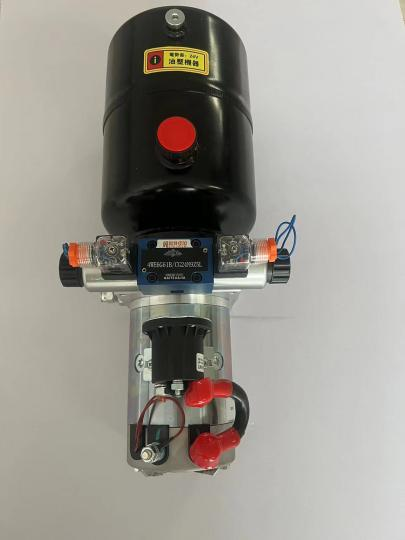Dec . 04, 2024 11:16 Back to list
Hydraulic Cylinder Rod Manufacturing Facility and Production Insights
The Role of Rod Hydraulic Cylinder Factories in Modern Engineering
In today's fast-paced industrial landscape, the significance of hydraulic systems cannot be overstated. At the heart of these systems lie rod hydraulic cylinders, which play a pivotal role in converting hydraulic energy into mechanical force. This functionality is essential in various applications, from construction and manufacturing to agriculture and automotive industries. A rod hydraulic cylinder factory specializes in the design, production, and distribution of these vital components, contributing to the efficiency and effectiveness of hydraulic systems globally.
Understanding Rod Hydraulic Cylinders
Rod hydraulic cylinders are devices that use pressurized hydraulic fluid to create linear motion. They consist of a cylindrical barrel, a piston, and a rod that extends from the piston. When hydraulic fluid is pumped into the cylinder, it pushes the piston, causing the rod to extend or retract. This simple yet powerful mechanism is the foundation of various operations, including lifting heavy loads, pushing and pulling objects, and providing controlled motion.
The Manufacturing Process
The production of rod hydraulic cylinders is a meticulous process that involves several stages, each crucial to ensuring the quality and reliability of the final product. Factories that specialize in these components generally follow a systematic approach
1. Material Selection High-strength materials such as steel or aluminum are chosen for their durability and resistance to wear. The right material is essential for ensuring the cylinder can withstand high pressures and harsh operating conditions.
2. Machining Precision machining is employed to create the cylinder components. Advanced technologies such as CNC (Computer Numerical Control) machining are commonly used to achieve tight tolerances and excellent surface finishes. This step is critical for ensuring that the piston moves smoothly within the cylinder without leakage or failure.
3. Assembly Once the components are machined, they are carefully assembled. This process often involves sealing mechanisms, such as O-rings or seals, to prevent hydraulic fluid from leaking. The assembly process requires skilled technicians who ensure that each cylinder meets strict quality standards.
4. Testing After assembly, each rod hydraulic cylinder undergoes rigorous testing to assess its performance and reliability. Factory tests typically include pressure testing, leak testing, and operational testing to verify that the cylinder operates as intended under various conditions.
rod hydraulic cylinder factory

5. Finishing and Coating Finally, the cylinders receive protective coatings to enhance their resistance to corrosion and wear. This finishing step is crucial for extending the lifespan of the cylinders and ensuring they perform well in demanding environments.
Importance of Quality Control
In the production of rod hydraulic cylinders, quality control is paramount. The reliability of hydraulic systems hinges on the performance of these cylinders. A failure in a hydraulic cylinder can lead to severe operational disruptions, safety hazards, and costly repairs. Therefore, rod hydraulic cylinder factories implement strict quality assurance protocols throughout the manufacturing process. This diligence ensures that all products not only meet industry standards but also exceed customer expectations.
Customization and Innovation
As industries evolve, the demand for specialized hydraulic cylinders has increased. Many rod hydraulic cylinder factories offer customization options to meet specific requirements. Customers can request variations in size, stroke length, mounting options, and even specialized seals for particular applications. Additionally, advancements in technology have led to innovations in cylinder design, such as the integration of smart sensors that enable real-time monitoring of cylinder performance.
The Global Market
The worldwide market for rod hydraulic cylinders has been growing consistently, driven by the increasing demand for efficient and reliable equipment across various sectors. As industries continue to embrace automation and advanced machinery, the role of rod hydraulic cylinders becomes even more critical. Manufacturers must adapt to changing technologies and customer demands to remain competitive in this dynamic market.
Conclusion
In summary, rod hydraulic cylinder factories are integral to modern engineering and industrial practices. They produce components that enable a wide range of applications, enhancing productivity and safety across multiple sectors. By focusing on quality, innovation, and customization, these factories play a crucial role in meeting the evolving needs of the hydraulic industry. As the demand for efficient hydraulic solutions grows, rod hydraulic cylinder factories will continue to be at the forefront, driving advancements and ensuring the reliability of hydraulic systems worldwide.
-
Fork Lift Power Units - Hebei Shenghan | Efficiency, Reliability
NewsJul.13,2025
-
1.5-Ton Turbocharged Cylinder-Hebei Shenghan|Hydraulic Solution,Energy Efficiency
NewsJul.13,2025
-
Auto Hoist Power Units-Hebei Shenghan|Efficiency&Industrial Lifting
NewsJul.13,2025
-
Double Acting Power Units-Hebei Shenghan|Hydraulic Solutions,Industrial Efficiency
NewsJul.13,2025
-
1.5 Ton Lifting Cylinder 70/82-40-290-535 - High-Performance Hydraulic Solution | Hebei Shenghan
NewsJul.13,2025
-
Fork Lift Power Units - Hebei Shenghan | Efficiency&Reliability
NewsJul.13,2025
